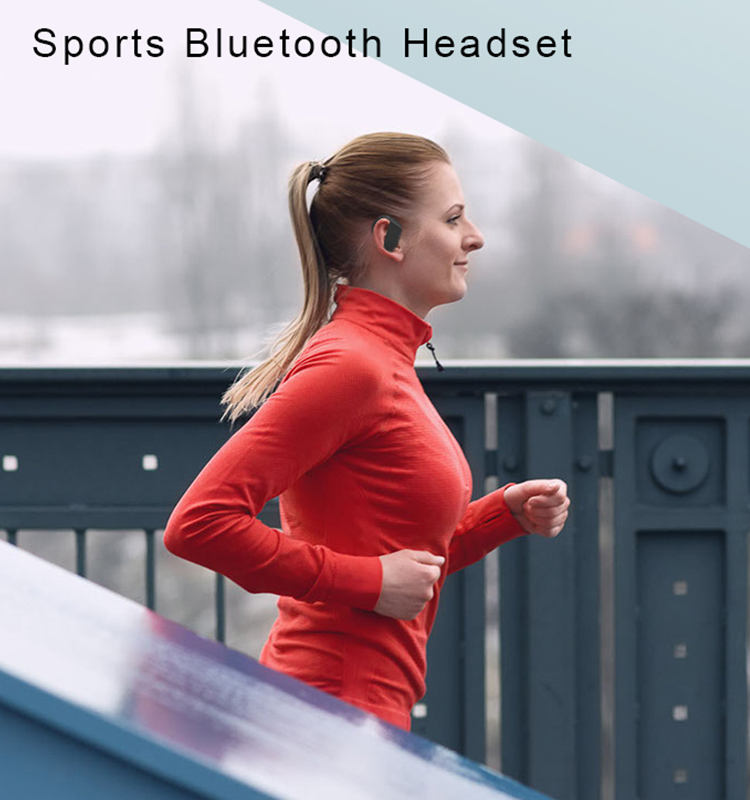
Why do my earplugs keep falling off?
| 2020-12-18 19:03:16
It is a common fact that if you have a pair of earbuds (and you know there is a pair of earbuds), you will spend most of your time making sure that those small sound projection devices will not fall off.
Okay, maybe the "versatility" is a bit strong. Of course, some people’s ears are miraculously the perfect size for standard dispensed earplugs. But for the rest of us, there may be a short-term window when the earplugs fit perfectly. After a lot of jabs and stimulation before the final decision, I don't think I need to listen to music for this run.
So, what's the use? If most earplugs "fit for everyone," why are they not actually suitable for everyone? To find out, you must go deep into your ears. (Magically speaking, not smaller than the elbow, or earplugs in this case, please be there.)
Each of your ears is composed of three different parts: outer ear, middle ear and inner ear.
The outer ear is the part of the ear that you can see. According to the National Library of Medicine, it is made up of the auricle (also called auricle), which is the shell-like structure on the side of the head that you usually think of when you think of ears. Your ear canal (also known as the auditory canal) is also the channel through which sound travels and is also a part of your outer ear.
Your eardrum, also called your eardrum, is where your middle ear begins. It spreads the sound from the world to your inner ear. It does this with the help of three small bones called ossicles-you might call them a hammer, an anvil, and a horse stir.
Unlike your earphones, ears are not really suitable for everyone, which is why your earbuds may sometimes not suit everyone.
Dr. Erich Voigt, associate clinical professor of the Department of Otorhinolaryngology-Head and Neck Surgery at NYU Langone Health, believes that earplugs should be suitable so that their small speakers fit snugly into the ear canal, allowing sound waves to hit the eardrum more directly. tell myself. Although there are no specific figures, Dr. Voigt estimates that the length of the human ear canal is approximately 2.5 cm (1 inch) and the diameter is approximately 0.7 cm (0.3 inch). The keywords here are about. The fact is that everyone’s ears and ear canals are different in size and shape, so even if all that one-size-fits-all earplugs are made according to “standard” ears, they cannot fit everyone perfectly.
“Children usually have smaller ear canals, and most men usually have larger ear canals than women,” Randi Tepper, an audiologist and head of pediatric audiology at the New York Eye and Ear Hospital of Mount Sinai, told SELF. In addition, it depends on the situation, this is where you are experiencing earplug problems.
Finally, because of how close your ears are to your chin, the earplugs may also fall off.
On each side of the skull, there is a temporomandibular joint, which acts as a hinge, allowing you to swallow, chew, and speak. Dr. Voigt said, but because your ears are just behind these joints, any movement of your chin will temporarily change the shape of your ear canal. Sometimes it only needs to be moved slightly.
Unfortunately, trial and error is indeed the best way to figure out which earplug works for you.
If your earplugs keep falling off, you have to interrupt every time you move your chin, or if they are too tight and cause pain, it's time to change them. Dr. Voigt said that just plugging them deeply into your ears can cause injuries such as scratching or ear canal infections, and he has seen this happen to some of his patients.
The good news is that many earplug manufacturers are catching up and producing devices of various sizes. Tepper explained that they usually have a foam or rubber dome designed to penetrate deep into the ear canal. (Foam usually works like earplugs to make them fall asleep, so you roll them into thin cylinders and pop them out of your ears so that they can expand to reach a more suitable position.) However, you may still need to try to find Out of their place in autumn.
Tepper recommends starting with medium-sized earplugs. There is also a trick to putting them in: grab your earlobe and pull it toward the back of your head to open the ear canal wider. After they came in, Tepper suggested shaking his head, then jumping up and down to see if they maintained their posture.
Although this sounds counterintuitive, unless you turn up the volume at the same time, wearing these earplugs designed closer to the eardrum will not increase the risk of hearing loss. Dr. Voigt said: "Close to the eardrum does not necessarily mean increased hearing loss, this is the most important volume."
Okay, maybe the "versatility" is a bit strong. Of course, some people’s ears are miraculously the perfect size for standard dispensed earplugs. But for the rest of us, there may be a short-term window when the earplugs fit perfectly. After a lot of jabs and stimulation before the final decision, I don't think I need to listen to music for this run.
So, what's the use? If most earplugs "fit for everyone," why are they not actually suitable for everyone? To find out, you must go deep into your ears. (Magically speaking, not smaller than the elbow, or earplugs in this case, please be there.)
Each of your ears is composed of three different parts: outer ear, middle ear and inner ear.
The outer ear is the part of the ear that you can see. According to the National Library of Medicine, it is made up of the auricle (also called auricle), which is the shell-like structure on the side of the head that you usually think of when you think of ears. Your ear canal (also known as the auditory canal) is also the channel through which sound travels and is also a part of your outer ear.
Your eardrum, also called your eardrum, is where your middle ear begins. It spreads the sound from the world to your inner ear. It does this with the help of three small bones called ossicles-you might call them a hammer, an anvil, and a horse stir.
Unlike your earphones, ears are not really suitable for everyone, which is why your earbuds may sometimes not suit everyone.
Dr. Erich Voigt, associate clinical professor of the Department of Otorhinolaryngology-Head and Neck Surgery at NYU Langone Health, believes that earplugs should be suitable so that their small speakers fit snugly into the ear canal, allowing sound waves to hit the eardrum more directly. tell myself. Although there are no specific figures, Dr. Voigt estimates that the length of the human ear canal is approximately 2.5 cm (1 inch) and the diameter is approximately 0.7 cm (0.3 inch). The keywords here are about. The fact is that everyone’s ears and ear canals are different in size and shape, so even if all that one-size-fits-all earplugs are made according to “standard” ears, they cannot fit everyone perfectly.
“Children usually have smaller ear canals, and most men usually have larger ear canals than women,” Randi Tepper, an audiologist and head of pediatric audiology at the New York Eye and Ear Hospital of Mount Sinai, told SELF. In addition, it depends on the situation, this is where you are experiencing earplug problems.
Finally, because of how close your ears are to your chin, the earplugs may also fall off.
On each side of the skull, there is a temporomandibular joint, which acts as a hinge, allowing you to swallow, chew, and speak. Dr. Voigt said, but because your ears are just behind these joints, any movement of your chin will temporarily change the shape of your ear canal. Sometimes it only needs to be moved slightly.
Unfortunately, trial and error is indeed the best way to figure out which earplug works for you.
If your earplugs keep falling off, you have to interrupt every time you move your chin, or if they are too tight and cause pain, it's time to change them. Dr. Voigt said that just plugging them deeply into your ears can cause injuries such as scratching or ear canal infections, and he has seen this happen to some of his patients.
The good news is that many earplug manufacturers are catching up and producing devices of various sizes. Tepper explained that they usually have a foam or rubber dome designed to penetrate deep into the ear canal. (Foam usually works like earplugs to make them fall asleep, so you roll them into thin cylinders and pop them out of your ears so that they can expand to reach a more suitable position.) However, you may still need to try to find Out of their place in autumn.
Tepper recommends starting with medium-sized earplugs. There is also a trick to putting them in: grab your earlobe and pull it toward the back of your head to open the ear canal wider. After they came in, Tepper suggested shaking his head, then jumping up and down to see if they maintained their posture.
Although this sounds counterintuitive, unless you turn up the volume at the same time, wearing these earplugs designed closer to the eardrum will not increase the risk of hearing loss. Dr. Voigt said: "Close to the eardrum does not necessarily mean increased hearing loss, this is the most important volume."

